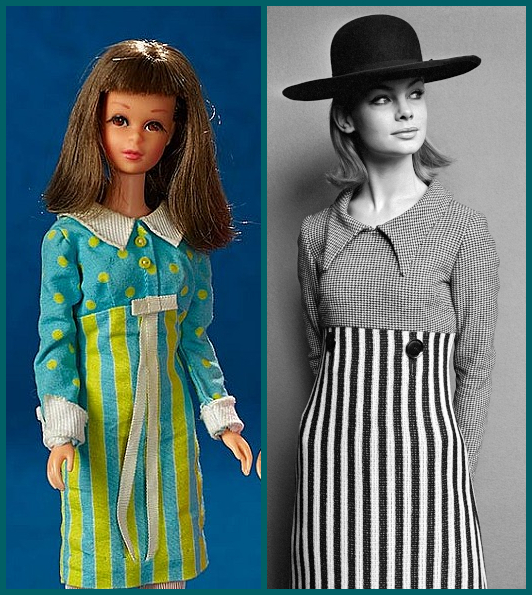
In her 1965 memoir Quant wrote, “When you break a rule, you automatically arrive at something different and this is fun. Take stripes, checks and polka dots. For years these were worn on their own or teamed with a plain colour. Nobody asked why. I believe in mixing patterns and colours wildly. So far as I’m concerned, spots go with stripes and checks.”
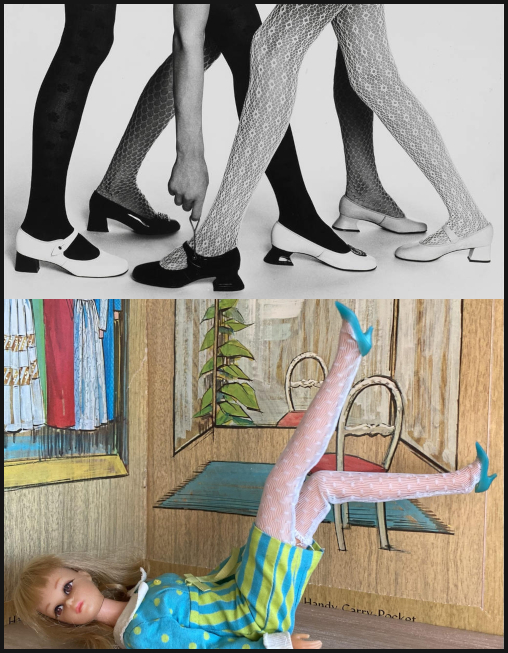
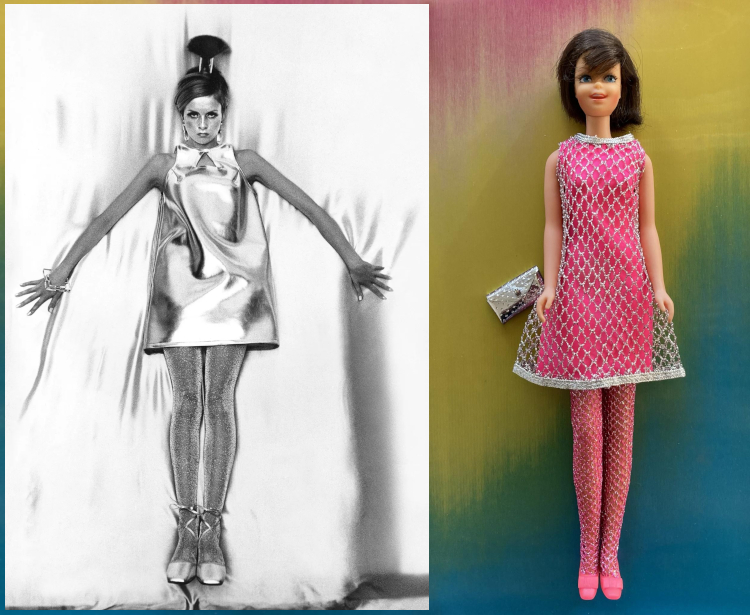
(The above is not meant to claim that Silver Cage is a Mary Quant design–neither is the frock Twiggy wears here–but in the mid-60s Quant made great innovations in womens’ tights; the glitter ones of ’66 were a particular success.)
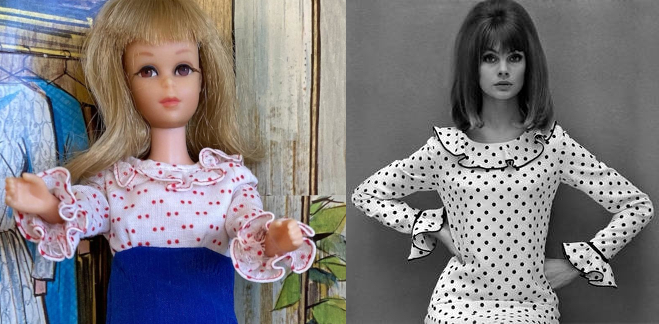
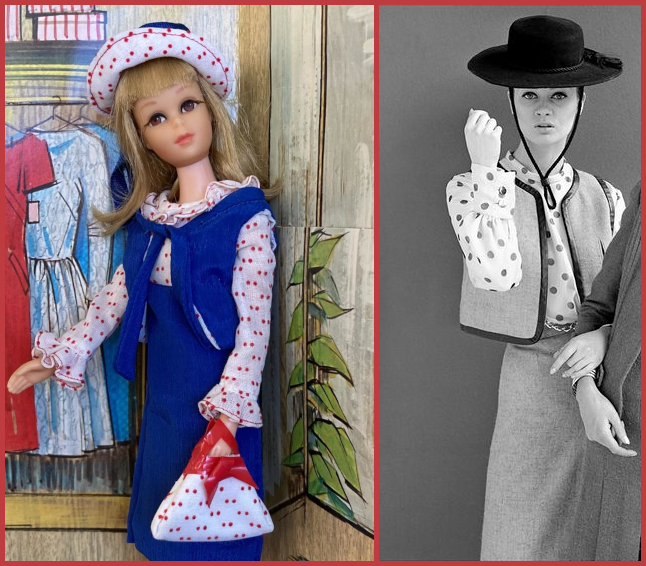
A 1965 New Yorker piece covering a Mary Quant “Youthquake” fashion promotion for the States quotes from a brochure titled, “Youthquake Lingo (For Salespeople Only)”: “‘Super’ is the British way of saying O.K. All these Youthquake fashions are very much super, meaning O.K. ‘Smashing’ is the English word for ‘great,’ meaning the most exciting. And it’s a great word to use for the entire Youthquake collection. A ‘flakeout’ is so bad it’s really awful…”
When Francie hit the scene the following year, an article in Barbie Magazine titled “Say It In Mod” explained, “Mod is short for modern and it means new… Cool means anything that’s great… and so does fabby, and marvey and neat! In means anything that’s in style, out means anything that isn’t! Groovy and gear are the same as cool…” and so forth (as transcribed by BillyBoy* in Barbie: Her Life and Times).
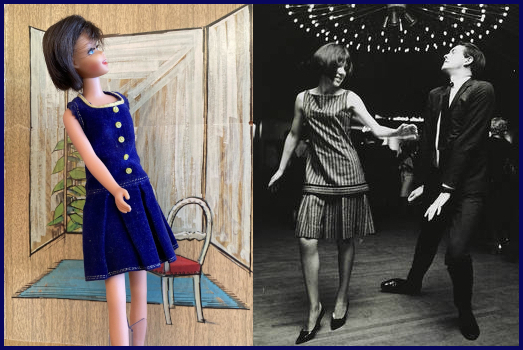
The preceding images of Quant, Shrimpton, Hammond, and unknown models in tights come from the Victoria and Albert Museum and its 2019 exhibition catalog, Mary Quant.
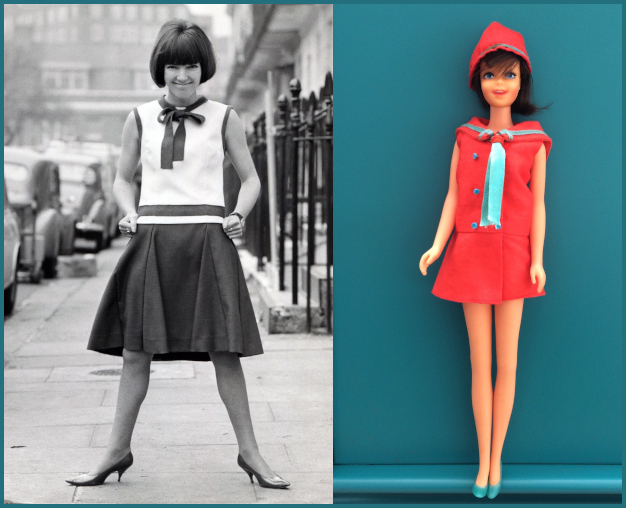
Quant also wrote in ’65 that “there was a time when every girl under twenty yearned to look an experienced, sophisticated thirty… when every girl dreamed of a slinky black dress worn with very high heels. All this is in reverse with a vengeance now… their ambition is to look like Patty [sic] Boyd rather than Marlene Dietrich.” (Twiggy would be discovered the following year.)
I swear, that Pattie Boyd–herself a Teen-Age Fashion Model when she met future husband George Harrison in 1964, catapulting her to celebrity status–reminds me of someone I’ve seen…
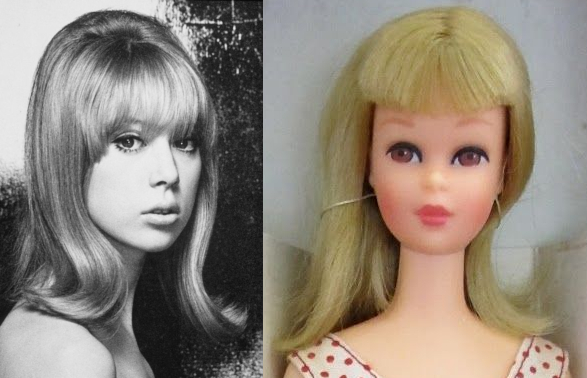

Leave a comment